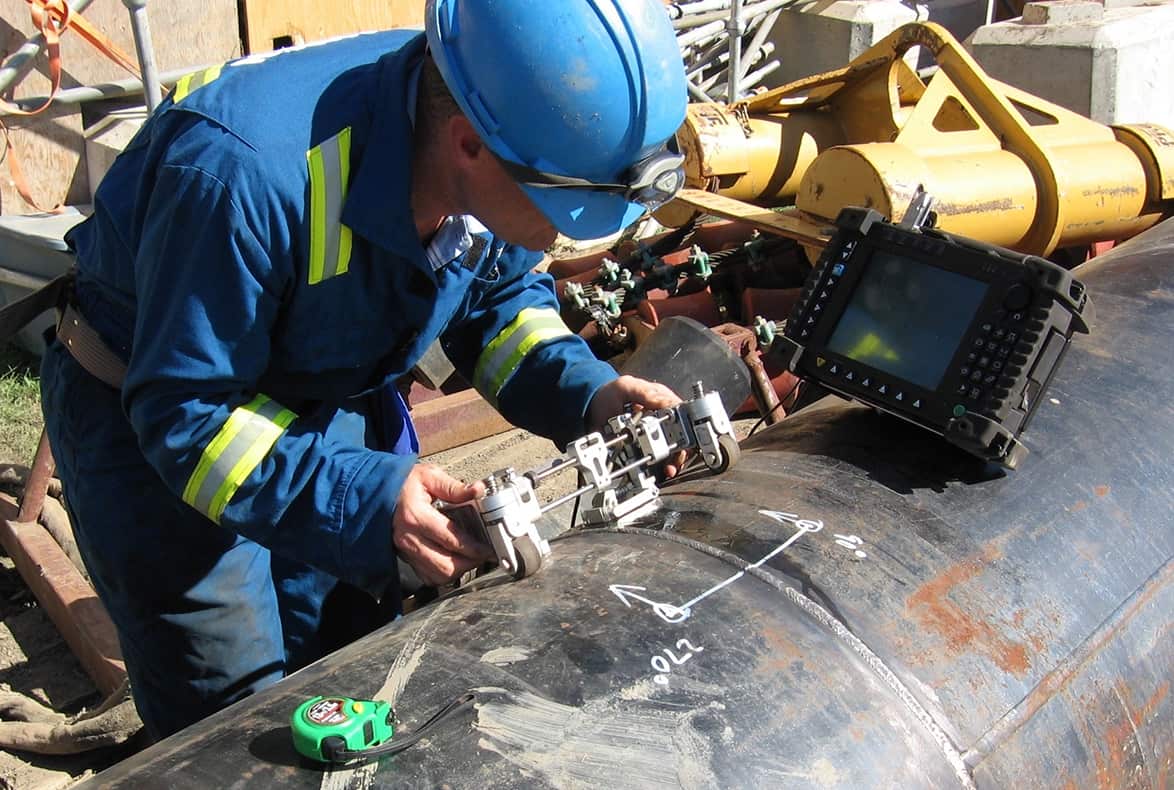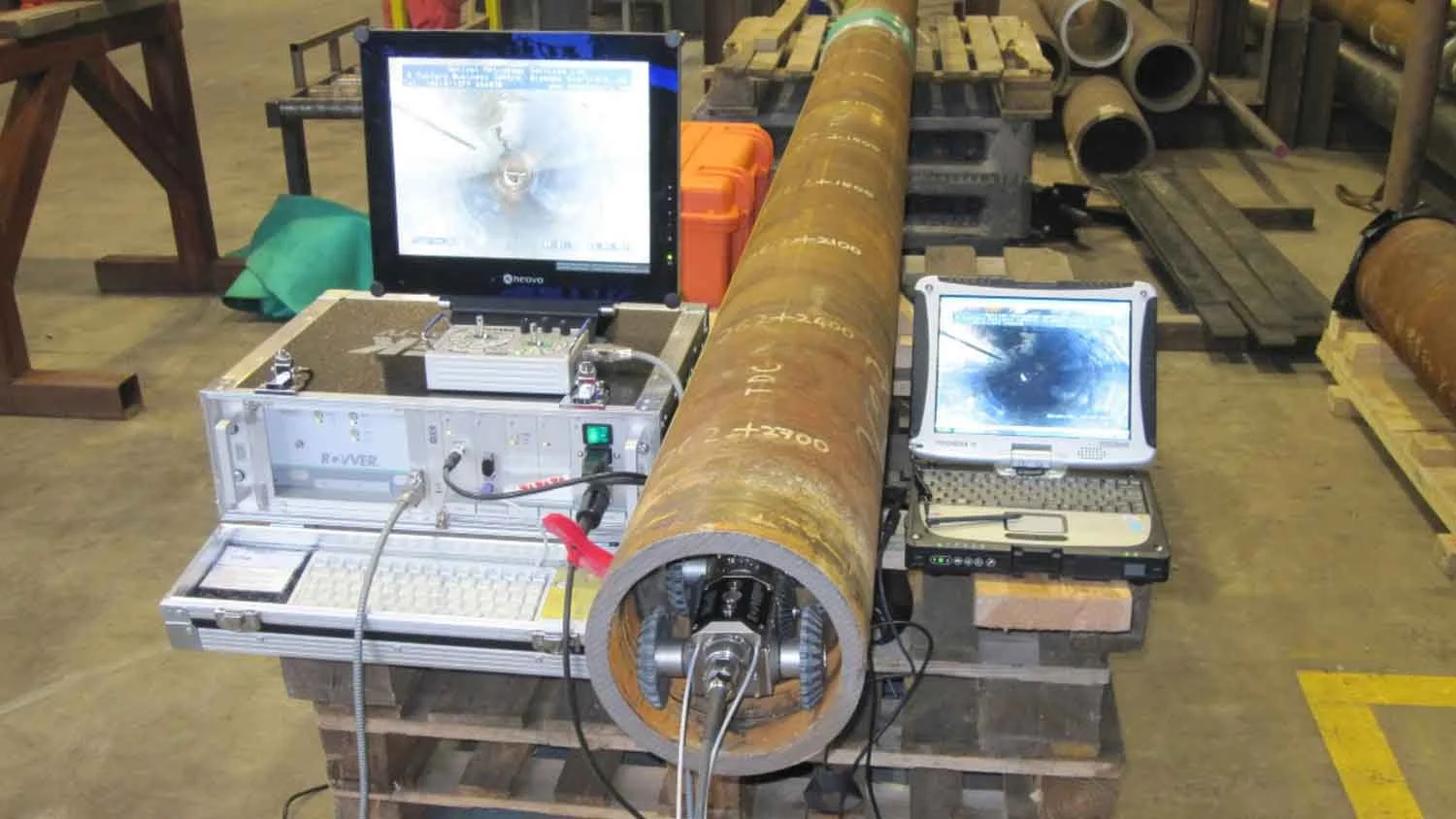Pipeline Welding Inspection: Cutting-Edge Methods for Accurate Evaluations
Pipeline Welding Inspection: Cutting-Edge Methods for Accurate Evaluations
Blog Article
Advanced Methods in Pipeline Welding Examination: Developments and Technologies for Enhanced Precision and Integrity in Weld Analysis
The landscape of pipe welding examination is undergoing a significant makeover, driven by sophisticated techniques that promise to enhance both accuracy and dependability in weld analyses. Developments such as computerized inspection systems and progressed imaging technologies are redefining conventional methods, while non-destructive testing approaches ensure material stability is kept.

Value of Weld Examination
Making sure the honesty of pipeline welds is vital to the total security and dependability of industrial systems. Welds act as the architectural foundation of pipelines, which deliver a range of liquids under varying stress. Issues in welding can cause disastrous failures, leading to not just substantial economic losses yet additionally possible environmental calamities and threats to public security. As a result, rigorous inspection of welds is integral to the lifecycle of pipe infrastructure.
The importance of weld inspection expands past mere compliance with regulative standards. It works as an aggressive measure to identify and rectify imperfections, such as insufficient fusion, porosity, or fractures, before they rise into significant problems. Effective assessment techniques also add to the longevity of pipes, lowering upkeep prices and enhancing functional performance.
Additionally, comprehensive weld inspections foster trust fund amongst stakeholders, including regulatory bodies, capitalists, and the neighborhoods offered by these pipelines. By ensuring that all welds fulfill the required criteria, companies can alleviate risks and copyright their online reputations. In summary, weld inspection is essential not just for functional stability yet additionally for the wider ramifications it holds for safety and security and environmental stewardship.
Automated Evaluation Equipments
The integration of automated examination systems in pipe welding has changed the strategy to ensuring weld quality and stability. These systems utilize sophisticated robotics and artificial knowledge to perform assessments that are not only faster however additionally extra constant than conventional methods. Automated systems can cover extensive lengths of pipes efficiently, catching data that human examiners may forget because of tiredness or ecological conditions.
Among the key advantages of computerized inspection systems is their capability to run in harmful atmospheres, decreasing the danger to human examiners. They make use of numerous non-destructive screening (NDT) methods, such as ultrasonic testing and magnetic fragment evaluation, to evaluate weld honesty without jeopardizing the framework. The data collected is refined in real-time, permitting prompt responses and prompt restorative actions when issues are determined.
In addition, automated systems facilitate the standardization of evaluation processes, making sure that each weld is assessed against regular requirements. This not just enhances the integrity of outcomes yet additionally streamlines compliance with governing requirements. As industries continue to focus on security and operational effectiveness, the duty of computerized inspection systems in pipe welding will most certainly expand, leading the way for extra sophisticated quality control methods.
Advanced Imaging Technologies
Frequently employed in contemporary pipeline welding assessments, progressed imaging modern technologies have actually significantly boosted the capability to spot and assess weld issues. Methods such as digital radiography, computed tomography, and thermographic imaging give examiners with high-resolution pictures that reveal sub-surface flaws and architectural variances that might be unnoticeable to the naked eye.
Digital radiography uses electronic sensing units to catch pictures, enabling for immediate testimonial and enhanced picture comparison. This causes faster view examinations and boosted accuracy in determining important issues. Computed tomography, on the other hand, provides three-dimensional imaging, making it possible for examiners to envision intricate geometries and examine the integrity of welds from several angles - Pipeline Welding Inspection. This depth of analysis is indispensable for discovering concerns that standard approaches may forget.
Thermographic imaging utilizes infrared technology to find variations in temperature, determining areas of potential weakness or anxiety within the weld. These sophisticated imaging technologies not only improve problem detection prices however likewise decrease the moment and resources required for pipeline assessments. Because of this, they play a critical duty in keeping pipe security and dependability, making certain conformity with industry requirements while decreasing functional risks.
Non-Destructive Examining Approaches
Utilizing various techniques, non-destructive screening (NDT) approaches are essential in pipe welding evaluations, permitting for the assessment of weld integrity without compromising the product's structural honesty. NDT incorporates a variety of techniques, including ultrasonic screening (UT), radiographic screening (RT), magnetic bit testing (MT), and color penetrant screening (PT) Each method has distinct benefits and applications depending upon the certain demands of the examination.
Ultrasonic testing utilizes high-frequency audio waves to detect inner problems, giving exact dimensions of weld thickness and integrity. Pipeline Welding Inspection. Radiographic screening employs X-rays or gamma rays to produce pictures of the weld, revealing inner issues that investigate this site may not be visible externally. Magnetic bit testing is efficient for identifying surface and near-surface interruptions in ferromagnetic products, while color penetrant testing highlights surface area cracks by utilizing a colored color
Including these NDT approaches into pipe welding evaluations improves the accuracy and reliability of weld assessments, making sure that potential failings are determined early. As markets require higher standards for security and efficiency, the function of NDT in preserving the integrity of bonded frameworks continues to be critical in pipeline building and construction and upkeep.

Future Fads in Weld Analysis
As we look to the future of weld analysis, advancements in modern technology are poised to reinvent the methods utilized for examining pipe stability. The assimilation of expert system (AI) and artificial intelligence in evaluation procedures is anticipated to enhance the accuracy of problem discovery and anticipating maintenance. These innovations permit real-time information analysis, allowing inspectors to identify potential problems before they intensify into significant troubles.
Additionally, using drones furnished with advanced imaging systems is gaining grip. These aerial assessments can cover huge areas promptly, catching high-resolution pictures and information that can be examined for defects in hard-to-reach places. This not only enhances safety and security but likewise enhances efficiency in the assessment procedure.
Furthermore, the advancement of smart sensors installed in pipeline systems provides the capacity for continual surveillance. These sensors can find modifications in pressure, temperature level, and vibrations, providing useful understandings into the wellness of the welds in time.

Verdict
Finally, the integration of advanced strategies in pipe welding assessment dramatically enhances the accuracy and reliability of weld assessments. Developments such as automatic inspection systems, progressed imaging innovations, and non-destructive testing techniques play an important duty in enhancing flaw discovery prices and cultivating positive upkeep strategies. As these innovations proceed to progress, they will even more make sure the security and effectiveness of pipe find more info systems, ultimately adding to the integrity of critical framework.

Report this page